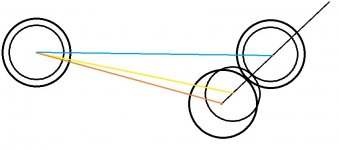The current popular games don't benefit so much from this type of info. Though it may help a few improve significantly on 3% of shots, or something along those lines.
Push games into stroke mode, where players need to make 2 or 3 rail position off every shot, and they'll get far more interested in learning how pivot knowledge can improve their percentages.
I just watched 2 hours of the famed Ko Pin Yi v Wu Jia Qing and it was an absolute snooze fest. The better they get, the more they dribble balls around the table, getting perfect shape onto shots Swipey McPullacross can make 9 out of 10.
Here's the video if you can stand to watch it all:
https://www.youtube.com/watch?v=teGixHdNyKo
I know you're a snooker appreciator, but even that game, imho, doesn't test the type of skills that I think are more dynamic.
It's become a game of long potting robots who happen to be good at peeling off 70+ breaks moving from black to reds, rarely with more than a 1/2 tip of english.
They are brilliant at it, but it's a tad mundane imho. The game is far more interesting when they get in positions where they have to travel around the table.
Just food for thought, because essentially, I agree with you!
Colin
